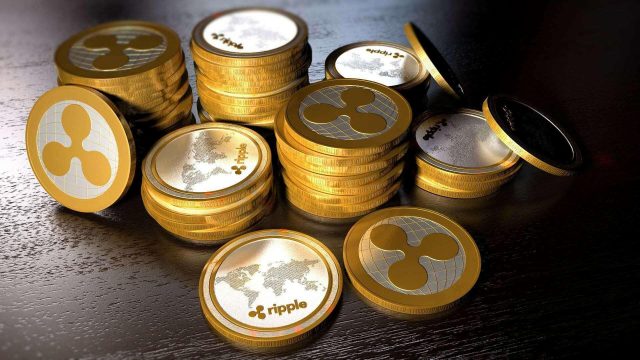
Where Does Ripple (XRP) Go From Here?

Ripple (XRP)–Yesterday we published an article on how Ripple would not only survive the crashing cryptomarketplace, but benefit from the upheaval of Bitcoin dominance. Today, we will revisit an idea we published at the beginning of the year, detailing how Ripple could improve upon the significant gains of 2017 and make out as one of the top cryptocurrencies of 2018.
More Exchanges for XRP
At this point in the game, exchanges = adoption. The more people who have access to XRP for purchase, particularly those offering direct fiat pairings, the greater the opportunity for price movement. While most of the bigger exchanges offer XRP, there’s still a barrier of entry for certain customer bases. In the United States, Coinbase is the largest portal for cryptocurrency buy/sells, and should be held as a gold standard (at least in terms of usability) for the rest of the industry. There are things to dislike about Coinbase–allegations of insider trading, the sketchy implementation of Bitcoin Cash, frequent buy/sell freezes for maintenance, etc.–but Coinbase offers a valuable service with direct ACH depositing/purchasing and their mobile application.
The mobile app is huge.
The fastest way to grow the adoption of cryptocurrency in general is to get in people’s phones. Not only does it offer simplistic, convenient ease-of-use, but it gives the impression of carrying your crypto with you, which is a familiar feeling to how we currently think of money.
The issue of exchange adoption will mostly be taken care of by the end of the Q1 2018. Coinsquare is set to release XRP on their exchange, which covers a large customer base in Canada. SBI Virtual, a subsidiary of the largest securities group in Japan, is in the process of launching a new exchange that will use XRP, at least initially, as the exclusive digital asset. We will finally have a case study for XRP/altcoin pairings, which boosts the value of XRP for digital transactions while also making it more of a pervasive currency in the same vein as Bitcoin, Litecoin and Ethereum.
It’s not that XRP is difficult to purchase at the moment, but it needs to be easier for the average customer, and especially for a newcomer to crypto. Put it through the Grandma Test. If you can’t guide your Grandma (assuming she’s not tech-savvy), to purchasing Ripple, then it’s still not there yet. We need exchanges as simple as downloading an app and clicking buy. The more people who own XRP, the more likely the currency can be implemented in novel ways outside of the financial sector–which is beneficial for both the intrinsic value of Ripple and overall price growth.
Using XRP in Marketplace Commerce
It’s puzzling why Ripple is not mentioned more often as a cryptocurrency for buying and selling goods through online, digital commerce. Bitcoin has been floundering in this department for the past two months, with fees too high for customers to bother using BTC over fiat, and frustratingly long transaction times that eradicate the possibility of small-purchase items (think coffee shops). No cryptocurrency has been subjected to the same volume as Bitcoin, which raises the question of scaling issues. Litecoin seems to be a strong competitor for transactions, but again, could become crippled under the same load as Bitcoin’s network congestion. Ripple, designed from the beginning for large bank-to-bank transactions, could theoretically scale to accommodate the volume required for use on a platform like Amazon or Ebay. It seems more than likely, with the positive press and near-daily partnership announcements, that some online marketplace looking to get into cryptocurrency will take the contrarian pick with Ripple. Bitcoin has the brand name and recognition of the general public, but choosing XRP to transact brings novel interest that is worth the investment. It may not be on the scale of an Amazon or Ebay, but a smaller commerce site or collection of sites will pave the way for greater commerce adoption.
In the end, cryptocurrency is not going to amount to as much of a zero-sum game as the community currently makes it out to be. The warring factions supporting their coins are going to have to come to the realization that what’s good for one coin is generally good for the market as a whole. If Amazon were to take the plunge into cryptocurrency, it is hard to imagine five years from now they would only be accepting Bitcoin. Instead, they would offer a variety of currencies, in an effort to broaden access to their user base. Bitcoin isn’t going away this year. Neither is Ripple, Ethereum, etc. These coins are going to be around for the foreseeable future, barring a total collapse of the entire industry or a new technology that makes crypto irrelevant.
Still, there is a race for adoption. The currency that is able to get the most partnerships and real-world implementation over the coming year will be the one in the greatest position to dictate the future of crypto. While XRP’s price will benefit substantially from greater adoption, more exchanges and general excitement over the currency, implementations that extend past the financial industry will be the greatest windfall for the average investor.
While Ripple may conquer the exchange and accessibility issue within the next couple of months, the coming focus should be on breaching a new industry of usability. Bank partnerships and fintech adoption are useful for drawing attention to Ripple and fulfilling the original vision for the cryptocurrency, but the potential for XRP is much greater.